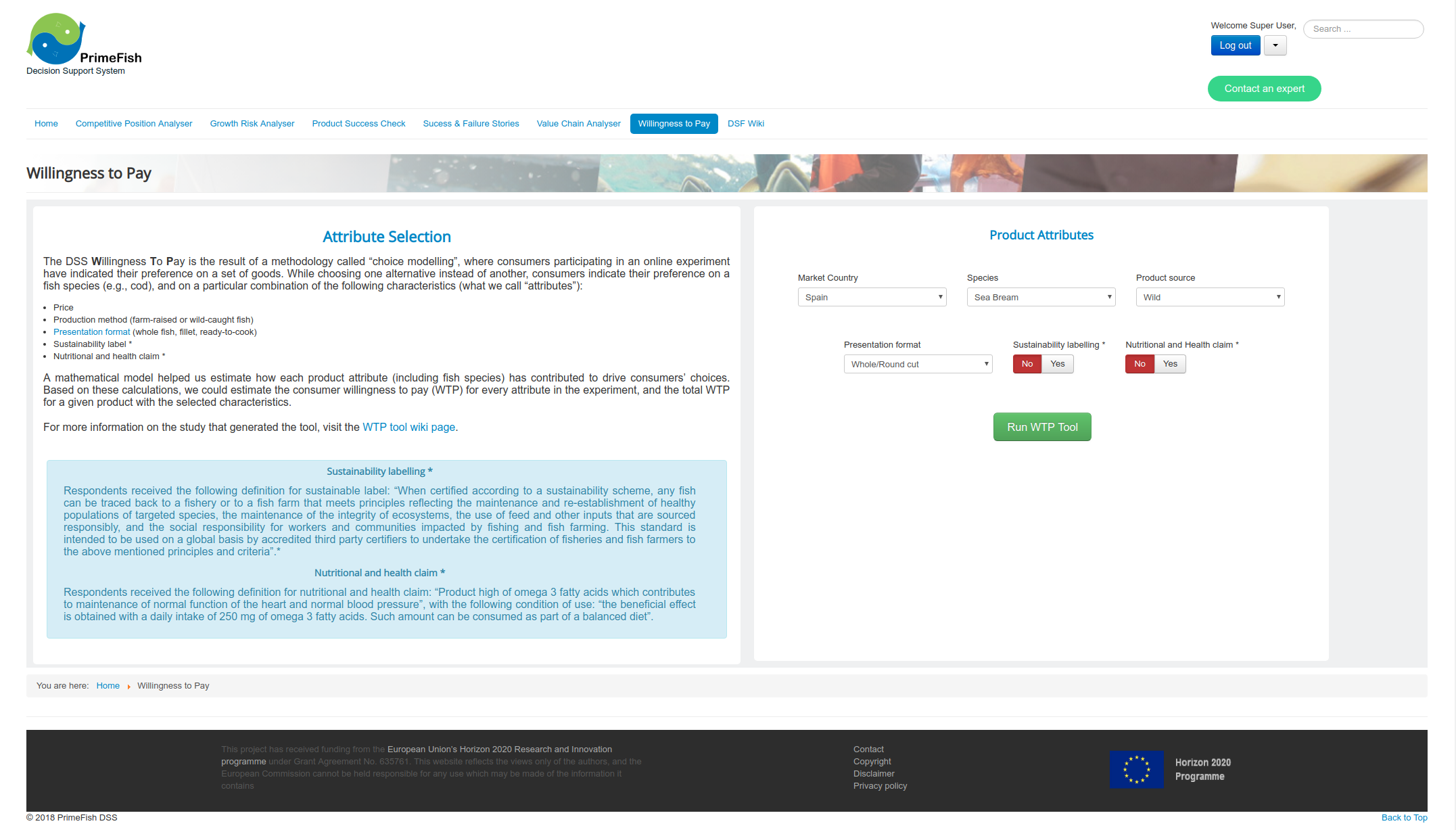WTP
Contents
Willingness to Pay
Introduction
The average apparent fish consumption per capita in the EU is the second highest in the world (at around 22 kg/capita/year), and some individual EU Member States are among the highest fish consuming countries in the world (EEA, 2016). The EU is the largest market in the world for fish; with a value of €55 billion and a volume of 12 million tons (FAO, 2016). While EU fish and seafood consumption has risen over the past 10 years with stable or declining supply from the fisheries sector, most of this increase has come from imports rather than from EU aquaculture. In 2014, around 75% of fisheries and aquaculture products consumed in the EU came from marine capture fisheries, which remains consistent with trends over the last decade (EUMOFA, 2015). Today 25% of all EU seafood consumption comes from EU fisheries, 10% from EU aquaculture and 65% from imports from third countries, both fisheries and aquaculture products. European aquaculture growth has stagnated since the turn of the century partly because its products have not been competitive compared with imports. In a market driven by the demand a better understanding of consumer purchasing behaviour towards fish products is paramount to developing more effective marketing and policy strategies. Therefore, understanding the consumers’ preferences across the EU countries for fish species and fish product attributes is crucial to sustain the fisheries and aquaculture sectors. The objective of this study was to investigate consumer demand and choice behaviour for fresh fish at the retail market. In particular, we examined consumer preferences for different fish alternative species, as well as different attributes. The outcomes allowed us to elicit consumers’ preferences and willingness to pay (WTP) for the salient attributes of a variety of fresh fish species in the retail market. We applied a discrete choice experiment (DCE) to accomplish this objective; this method is strongly consistent with the economic demand theory and in particular with the multi-attribute demand studies based on the Lancastrian consumer theory .This theory assumes that consumer’s utility stems from product properties rather than the products themselves. Thus, multi-attribute demand models can elicit the intrinsic value of the product attributes and have been applied widely in marketing research. Moreover, this method is highly flexible with respect to data collection and model specifications. DCE is based on random utility theory about individual decision making, and seems realistic in imitating real shopping behaviour (Louviere et al., 2000). Choice modelling techniques are multi-attribute valuation techniques that elicit values for multiple attributes by asking respondents to rate, rank or choose a set of attributes (levels). In particular, choice experiments are valuation techniques where respondents have to make trade-offs and indicate their preferred option out of a set of alternatives. We developed a choice-based on-line experiment, on a number of 500 respondents per country (Italy, France, Spain, UK and Germany). The profile attributes and levels analysed are derived from previous qualitative tasks (i.e., qualitative analysis by in-person interviews), and include product innovation features such as health claims, sustainability certification, etc. To accommodate the evaluation of choice alternatives through both attribute judgment and alternative comparison, we applied a labelled choice experiment (LCE), where choice alternatives were labelled by the respective names of the seafood (e.g., salmon, cod, herring, etc.) (Nguyen et al., 2015). We set our model specification in such a way that the constant terms, which represent intrinsic value of the alternatives, and attribute parameters were varied both over fish alternatives and across countries. The WTP associated with each attribute, by species and country, was also estimated.
Tool overview
The tool contains the explanation necessary to understand its working and results. Once you select the product attributes and click the Run button, a results page will be displayed containing the results and an analytical explanation of its contents.


